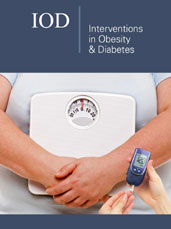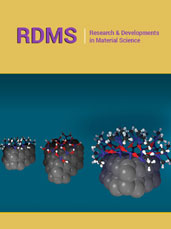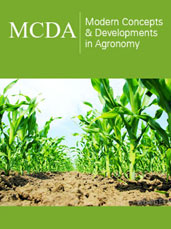- Submissions

Full Text
Intervention in Obesity & Diabetes
Dietary Supplementation in Metabòlic Acidosis in Patients with Liver Dysfunction
Joanna Michalina Jurek*
Department of Medicine and Surgery, GEMMAIR Research Group, Tarragona Joan XXIII University Hospital, Pere Virgili Health Research Institute (IISPV), Rovira i Virgili University (URV), Spain
*Corresponding author:Joanna Michalina Jurek, Department of Medicine and Surgery, GEMMAIR Research Group, Tarragona Joan XXIII University Hospital, Pere Virgili Health Research Institute (IISPV), Rovira i Virgili University (URV), C/ Dr. Mallafré Guasch, 4, 43005 Tarragona, Spain
Submission:September 04, 2024;Published: September 25, 2024

ISSN 2578-0263Volume6 Issue5
Abstract
The liver plays a crucial role in maintaining acid-base equilibrium, an essential process for overall metabolic homeostasis. This review explores the liver’s involvement in acid-base regulation, focusing on mechanisms like lactic acid metabolism, urea production, ketogenesis, and albumin homeostasis. Liver dysfunction, such as cirrhosis or acute liver failure, can lead to metabolic acidosis, exacerbated by conditions like hyponatremia, hyperchloremic metabolic acidosis, and lactic acidosis. Additionally, dietary habits, particularly high-protein and low-carbohydrate diets, can further disrupt acid-base balance, influencing conditions like Non-Alcoholic Fatty Liver Disease (NAFLD). Dietary interventions and supplementation offer potential strategies for managing metabolic acidosis in patients with liver dysfunction. Supplements such as carnitine, branched-chain amino acids, sodium bicarbonate, magnesium, omega-3 fatty acids, and alpha-lipoic acid may help restore acid-base homeostasis and improve liver function. Furthermore, dietary patterns like the Mediterranean diet, low-protein diet, and alkaline diet can mitigate acid-base disturbances by reducing acid load and supporting metabolic health.
The review emphasizes the need for personalized dietary recommendations and supplementation strategies in managing metabolic acidosis in liver disease patients, particularly those with NAFLD. By addressing both nutritional and metabolic factors, these interventions can potentially improve patient outcomes and prevent the progression of liver-related complications.
Keywords:Dietary supplementation; Nutrition; Acidosis; Metabolism; Liver dysfunction
Introduction
Acid-Base Equilibrium is an important parameter within an organism that determines the relationship between acids and bases produced daily by both endogenous (cellular) metabolism and (exogenous) acids and/or bases taken in through food. The acids of the organism are represented as the hydrogen ion (H+), while the bases by the bicarbonate radical (HCO3-) [1]. Although the key body organs involved in the regulation of Acid-Base Equilibrium are mainly the kidneys and the lungs, also liver can play a significant role [2], especially in relation to its role in lactic acid metabolism, urea production and in protein homeòstasis [1].
In addition, a growing number of studies have shown that hepatic dysfunction can lead to various complex metabolic acid-base disorders, including metabolic acidosis, particularly liver cirrhosis and acute liver failure. Research have shown that patients with liver diseases, such as cirrhosis or acute liver failure, are often reported with certain dysregulation of the acid-base conditions. Among these individuals, although the most commonly occurring is respiratory acidosis acquired due to hyperventilation in patients with hepatic cirrhosis [3]. Also in those who are critically ill e.g., because of sepsis or bleeding), the excessive accumulation of acid-based imbalances, leading to metabolic acidosis [4]. The role of liver in regulation of acid-base homeostasis in health and disease. The liver is involved in the regulation of Acid-Base Equilibrium through four mechanisms, which include lactic acid metabolism; albumin homeostasis; ketogenesis and urea production (details described in the graph below).
The hepàtic mechanisms of regulation of acid-based homeòstasis [1]: lactic acid metabolism: liver as the main site of lactic acid production per day (70%), the hepàtic enyzmes are involved in the metabolism of lactic acid to and conversion to glucose by . This process results in the equivalent release of an HCO3- radical. albumin homeòstasis: under normal conditions, albumin is considered as weak acids. Hypoalbuminemia, either from reduced production due to liver failure or from increased loss observed in the nephrotic syndrome can result in mild Metabolic Alkalosis, while hyperalbuminemia, which occurs mainly in dehydrated conditions, is accompanied by mild.
Metabolic Acidosis
a. Ketogenesis: of fats in the hepàtic mitochondria can lead to
the production of (3-hydroxybutyric and acetoacetic acid) that
are broken down into ions of H+, are excreted by the kidneys.
The production and excretion of keto acids is regulated by a
reciprocating mechanism. Thus, a decrease of the pH (acidic
environment) leads to a decrease in the production of keto
acids, while on the contrary, increasing the pH increases the
production of keto acids
b. Urea production: daily intake of 100g of protein per day can
increase the production of NH4 to 1mol (1,000mmol). NH4,
being considered as a weak neurotoxic acid, is metabolized
in the liver to urea, which is excreted by the kidneys. The
conversion of NH4 is an acidification process, which requires
the consumption of an equivalent amount of strong base, what
may play an important role in the regulation of Acid-base
equilibrium
Given a role of the liver as active body site involved in the regulation of acid-base balance, not surprisingly if affected by certain dysfunction, like cirrhosis, acute or chronic failure can result in disruption of the acid-base equilibrium [5]; in addition damage to other organs or systems of the body due to hepatic impairment, including kidney failure and hepatic encephalopathy may exacerbate the already present Acid-base equilibrium imbalance [6], leading to metabolic alkalosis or acidosis. Nevertheless for the purpose of this article, the main focus will be taken on the metabolic acidosis and acidifying factors will be evaluated given their significance in liver research.
For example, hyponatremia (defined as serum Na+<135mEq/L), a common (>50%) electrolyte disorder in patients with cirrhosis and ascites, is often caused by increased reabsorption of H2O by the kidneys (hepatorenal syndrome), through the stimulation of the Renin-Angiotensin system and/or the stimulation of the antidiuretic hormone, due to reduced circulating blood volume [7]. In addition in case of individuals with ascites, to the increased reabsorption of H2O, repeated therapeutic punctures of may also play an important role [8], whereas dilution hyponatraemia present in patients with liver cirrhosis, acting as an acidifying factor can also contribute to acidosis, also so-called hyponatraemic acidosis [9]. Another common cause of hyperchloremic metabolic acidosis in patients can be presence of diarrhoea especially if they are prescribed with lactulose or with established diagnosis of hepatic encephalopathy [10]. In addition, in case of individuals admitted to Intensive Care Units (ICU), the presence of tissue hypoxia associated with reduced perfusion can result in the metabolic acidosis, being a consequence of reduced lactic acid degradation from the site of production (also known as lactic acidosis). Similar case might be also relevant in those who undergone an intensive training activities, thus the lack of degradation of lactic acid by the muscles, followed by reduced transfer of this metabolite to the liver, can subsequently slow down metabolism and production of resembling lactic acidosis.
Finally, certain dietary hàbits and specific diets, like diet low in carbohydrate (keto diet) or high-protein diet may influence acid-based homeostasis, with studies showing that individuals consuming diets high in animal protein, usually have low urine pH, which as biomarker of metabolic acidosis was previously associated with incidence of NAFLD and higher acid load acidosis [11]. Furthermore, a significant reduction of food intake, malnutrition or starvation as well as in alcoholism, can affect the regulation of Acidbase equilibrium, as it requires human body to make a switch from utilizing glucose (carbohydrate) to fat/ketones as main substrate for energy production, leading to appearance of a severe degree of Metabolic Acidosis [1].
The role of dietary hàbits and metabolic acidosis has been closely linked with Non-Alcoholic Fatty Liver Disease (NAFLD), with studies showing a strong relationship between these two conditions which additionally seems to be regulated by both dietary and metabolic factors. For example, presence of certain hormonal changes, such as reduced levels of Growth Hormone (GH) and Insulin-like Growth Factor-I (IGF-I) can contribute to the development and progression of NAFLD, suggesting that metabolic acidosis may indirectly influence NAFLD through hormonal regulation [12]. In addition, studies conducted to date suggest that a diet with a high acid load may influence the development of NAFLD, potentially leading to mild metabolic acidosis. Interestingly, dietary interventions promoting intake of alkaline foods, like fresh fruits and vegetables decreases it [11]. A higher estimated Net Endogenous Acid Production (NEAP) has been associated with an increased likelihood of NAFLD. Noteworthy, the acid load from the diet may influence NAFLD development through hormonal changes, particularly reduced levels of Growth Hormone (GH) and Insulinlike Growth Factor-I (IGF-I), which are common in both NAFLD and metabolic acidosis [12].
Similar observations have been made in a large cross-sectional study in which a Diet-Dependent Acid Load metrics were positively associated with NAFLD and potentially with advanced hepatic fibrosis, especially in middle-aged and elderly populations, particularly in women [11]. Although there are many possible explanations on how components of acidogenic diet may influence NAFLD, so far, the most relevant proposed mechanism include interplay between insulin resistance, increased inflammation, and disturbances in acid-base balance. These factors can contribute to hepatic insulin resistance and the availability of free fatty acids, which are risk factors for NAFLD. Therefore, given these implications, the role of nutrition in the management and prevention of metabolic acidosis in patients with liver dysfunction, including appropriate dietary recommendations and supplementation may be of interest especially in NAFLD patients and/or those who developed imbalances in acid-based homeostasis.
Recommended Supplementation for Restoring Acid-Base Homeòstasis in Patients with NAFLD
In managing metabolic acidosis in patients with liver dysfunction, such as NAFLD, it is important to understand the relationship between NAFLD and acid-base balance, as well as the potential benefits of using dietary supplementation in managing the patient wellbeing. Briefly, NAFLD is often associated with metabolic syndrome, which can lead to disturbances in acid-base balance. Consequently, patients with NAFLD may experience mild metabolic acidosis due to various factors, including presence of insulin resistance, increased fatty acid oxidation and/or impaired hepatic acid-base regulation [13]. Consequently, targeting acidbase homeostasis can potentially help manage NAFLD and its associated complications and dietary supplements may play a role alongside nutritional strategies, while bringing additional benefits such as lipid profile control, increased vitamins, and antioxidants intake [14]. Below the most commonly recommended dietary approaches are described and to date knowledge obtained from systematic analyses has been summarized (Table 1) based on the available information:
Carnitine
Carnitine is a vitamin-like substance that is implicated in the regulation of lipid metabolism and energy production. Carnitine supplementation with common daily doses ranging between 1200-4000mg appears to be beneficial for patients’ liver cirrhotic, who may suffer from carnitine deficiency due to reduced food intake, malnutrition, and other acquired metabolic dysfunctions. Supplementation with carnitine has been shown to improve complications such as hepatic encephalopathy, sarcopenia, and muscle cramps in liver cirrhosis in these individuals [15].
Branched-chain amino acids (BCAAs)
BCAAs, including valine, leucine, and isoleucine are recommended to maintain stable euglycemia and moderate caloric support. In particular, L-leucine has been proposed as the main amino acid involved in protein turnover and is able to reverse the proteolytic process towards protein which can help to sustain protein synthesis and inhibit protein breakdown commonly observed in hepatic encephalopathy. Apart from that, BCAA supplementation promotes anabolic pathways and reduces cachexia, alleviates fatigue, promotes wound repair, and stimulates insulin production. These properties are attributed to the presence of Hydroxy-Beta-Methyl Butyrate (HMB) is an active metabolite of leucine, which anti-catabolic properties were shown in patients with liver cirrhosis prescribed with L-leucine doses of 2500mg, L-isoleucine 1250mg, L-valine 1250mg, HMB 1500mg, as a part of nutritional support recommended by the European Association in liver failure, regarding also providing other nutrients, such as vitamin D 40mcg (therapeutic dosage) or 1600 I.U., vitamin K 60 - 400 micrograms, prebiotics and B-vitamin complex (including 25 milligrams of vitamin B1, B2, B6, and niacin; 400 to 800 micrograms of folic acid; and 25 micrograms of vitamin B12) [16].
Sodium bicarbonate
Sodium bicarbonate is often prescribed for patient with metabolic acidosis with key purpose to increase the base in the blood, counteracting the acid. In cases when the physiological pH range cannot be reached with the nutritional-dietary treatment, the sodium bicarbonate (NaHCO3) is advised with a dose of NaHCO3 is 0.5 to 1.0mEq of NaHCO3/kg of b.w. per day in patients with serum [HCO3] <22mmol/L. This can be administered in various forms, such as tablets or powder, and is tailored to the patient’s specific needs. The additional benefits may also include reduction of metabolic acidosis and improvement of the insulin sensitivity.
Magnesium
Magnesium is a vital mineral involved in over 300 enzymatic reactions in the body, including energy metabolism, protein synthesis, and acid-base balance. Magnesium act as cofactor for enzymes involved in bicarbonate production and renal acid excretion and help to maintain the body’s pH by supporting the function of proton pumps. The potential benefits of daily intake of 200-400mg preferably in the form of magnesium citrate and glycinate (due to their higher bioavailability and better tolerability) can improve Insulin Sensitivity by enhancing insulin-mediated glucose uptake, and also by modulating inflammatory pathways, magnesium may help reduce liver inflammation. Finally, magnesium supports various liver enzymes and may help improve overall liver health and reduce cardiovascular risk in these patients.
Omega-3 fatty acids
Omega-3 fatty acids, including Eicosapentaenoic Acid (EPA), Docosapentaenoic Acid (DPA), and Docosahexaenoic Acid (DHA) have been shown to have a variety of health benefits, including reduced inflammation and improved metabolic health. Although not directly related to metabolic acidosis, omega-3 supplementation has been associated with a reduced risk of liver disease, reduced inflammation and improvements of overall metabòlic Health, which all together may benefit patients with NAFLD. In addition, supplementation with DHA can improve liver and visceral fat in paediatric NAFLD, and supplementation with DHA and EPA can reduce liver fat. Omega-3 fatty acids have hepatic anti-inflammatory and insulin-sensitising effects and help with NAFLD management, especially in severe cases. The proposed dose ranging from 1 to 2g of EPA+DHA a day.
Alpha-lipoic acid (ALA)
ALA is a naturally occurring antioxidant that is synthesized in small amounts by the human body. It’s also found in some foods and is available as a dietary supplement. The key benefits for NAFLD patients with metabòlic acidosis include antioxidant properties, which can help to restore other antioxidants like vitamin C, vitamin E, and glutathione. Also ALA has metabolic effects related to regulation of energy metabolism and enhancement of insulin sensitivity by improving glucose uptake and utilization. The main benefits from daily supplementation of 600-1200mg/day may help reduce insulin resistance, a key factor in NAFLD development, neutralize free radicals and protect against oxidative damage. Also ALA can decrease liver fat accumulation and improve hepatic enzyme levels, including ALT and AST.
Dietary modifications
Diets can influence the body’s acid-base status because specific food components yield acids, bases, or neither when metabolized. Animal-sourced foods yield acids and plant-sourced food, particularly fruits and vegetables, generally yield bases when metabolized. Modern diets proportionately contain more animal-sourced than plant-sourced foods, are, thereby, generally net acid-producing, and so constitute an ongoing acid challenge [17]. Therefore ability to modulate the type and quality of diet is important for reducing symptoms of liver dysfunction as well as restoring acid-base homeostasis. Noteworthy, the role of nutrition in management of metabolic health can be crucial as it is upregulating specific anti-aging genes implicated in acid-base homeostasis, such as sirtutin-1, which has been shown to increase survival and reverse certain liver conditions [18]. Use of the certain dietary-nutritional regimens has been proposed as a useful strategy to counteract metabolic acidosis. The most commonly given nutritional advice is based on principle of increasing the intake of fruits, vegetables, and plant-based proteins which has been shown to be effective in lowering acid levels in the body.
Dietary Interventions and their Implication in Management of Metabolic Acidosis with Liver Dysfuncti
Also, several dietary patterns including freqüent consumption of foods which are source of alkali, important to restore acid-based homeostasis by neutralizing acid, include adoption of principles of the Mediterranean diet, the alkaline diet, the low-protein diet, as well as the vegan low-protein diet [14].
Mediterranean diet (MD)
The MD represents a healthy eating pattern associated with numerous beneficial effects and correlated with the reduction in the risk of developing various chronic diseases. The MD is characterized by the regular consumption of plant-based foods such as fruit, vegetables, legumes, cereals and nuts, and the use of Extra Virgin Olive Oil (EVOO), which together with nuts, is the main source of fats making MD rich in Monounsaturated Fatty Acids (MUFAs) and Polyunsaturated Fatty Acids (PUFAs), while maintaining a low intake of Saturated Fatty Acids (SFAs) deriving from foods such as dairy products and meat [19]. Both MUFAs and PUFAs are associated with numerous health benefits including antioxidant and anti-inflammatory properties, capable of preventing various diseases related to oxidative stress and chronic inflammation state. Especially, EVOO, as the rich in polyphenols and MPCs induces several protective effects in NAFLD patients, counteracting oxidative stress, inflammation, and improving purine and lipid metabolism.
Alkaline version of MD
Although MD diet has been linked with many benefits for metabolic Health, it may still contain foods that contain phosphorus and proteins of an animal-origin, such as eggs, cheese, and meat, which can alter the blood pH. Therefore, patients with metabolic acidosis are recommended to frequently consume alkalizing foods, rich in potassium, calcium, and magnesium, such as fruit, vegetables, whole grains, legumes, and nuts. They also should be educated to cook vegetables by boiling them, the vegetables should be boiled twice or for a long time before consumption. Moreover, fruit intake should be limited to a maximum of 300g per day, and low-potassium content fruit (such as apples, pears, strawberries, etc.). should be favoured, whilst fruit with high-potassium content (such as bananas, peaches, etc.) should be avoided. It is also necessary to pay attention to hidden sources of potassium, such as food additives in preserved foods [20].
Low-protein diet
The Low-Protein Diet (LPD) is characterized by a protein intake lower than 0.8g/kg of b.w. per day with an energy intake between 25-35kcal/kg of b.w. per day [21]. The mechanism of action of LPDs relies on the fact that a lower protein intake will result in the production of less protein-derived waste products coupled with diminished retention of fixed acids.
The vegan LPD
Vegan LPD providing 0.6 to 0.7g/kg of protein of b.w. per day, considered also to be a low-phosphorus diet based on strict combinations of cereals and legumes to provide the essential amino acids is an option for patients who refuse the use of protein-free products. A vegan LPD is based on the consumption of plant-based foods such as legumes, vegetables, cereals, and tubers, while also implementing the intake of vitamins, fibres, natural bioactive compounds. For example, Minor Polar Compounds (MPCs) present in Extra Virgin Olive Oil (EVOO), and antioxidants present in plants-based foods, and to simultaneously remove harmful phosphate additives from animal-derived ultra-processed foods, which help to reduce other metabolic-related dysfunctions, such as arterial hypertension, hyperphosphatemia, metabolic acidosis, and dyslipidaemia, while preventing the metabolic acidosis and its deleterious consequences [14].
Alkaline diet (AD)
The AD is characterized by a high content of alkaline ions from foods that are supplied to the body as a result of metabolic processes. The hypothesis of the “acid-ash” diet is to reach a greater alkaline load through a higher consumption of fruit and vegetables and a moderate consumption of proteins [22]. It is essential to keep in mind that proteins, after being metabolized, release acid (H+). The number of acids released is related to the type of amino acids they contain. In fact, amino acids can be divided into neutral (alanine, phenylalanine, glycine, isoleucine, leucine, methionine, proline, tryptophan, valine, asparagine, glutamine, serine, threonine, cysteine, and tyrosine), acidic (aspartate and glutamate), and alkaline (arginine, histidine, and lysine). Specifically, lysine, arginine, and histidine form hydrochloric acid, while cysteine and methionine are converted to sulfuric acid. On the contrary, fruit and vegetables, after being metabolized, produce alkali species that are able to neutralize acids. Moreover, foods containing phosphorus, both of natural origin and from food additives, further increase the acid load introduced with the diet [23]. Since the consumption of proteins leads to a higher production of acid and the consumption of fruit and vegetables leads to a higher production of alkali species, the AD represents a nutritional approach helpful to counteract the metabolic acidosis [24].
Conclusion
This review highlights the important role of the liver in maintaining acid-base homeostasis, particularly focusing on metabolic processes such as lactic acid metabolism, albumin homeostasis, ketogenesis, and urea production. Dysfunction of the liver, such as in conditions like cirrhosis or acute liver failure, can lead to significant disruptions in this equilibrium, resulting in complex metabolic disorders, including metabolic acidosis. The potential impact of dietary habits on acid-base balance, particularly in NAFLD patients may help in overall disease management and if planned appropriately can support patient wellbeing. Diets high in animal proteins and low in fruits and vegetables can contribute to a higher acid load, exacerbating metabolic acidosis and potentially influencing the development and progression of NAFLD. Conversely, dietary interventions that promote the intake of alkaline foods, such as those found in the Mediterranean diet, have been shown to mitigate these effects and may play a crucial role in managing NAFLD and maintaining acid-base homeostasis.
Furthermore, dietary supplementation, including the use of carnitine, branched-chain amino acids, sodium bicarbonate, magnesium, omega-3 fatty acids, and alpha-lipoic acid, can be beneficial in managing metabolic acidosis in patients with liver dysfunction. These supplements not only help restore acidbase balance but also provide additional health benefits, such as improving insulin sensitivity, reducing inflammation, and supporting overall liver health. In summary, maintaining acid-base equilibrium is essential for liver function and overall metabolic health. Both dietary habits and targeted supplementation can play significant roles in managing liver-related metabolic acidosis, with particular relevance to conditions like NAFLD. Personalized nutritional strategies, along with appropriate supplementation, should be considered in the management and prevention of metabolic acidosis in patients with liver dysfunction.
References
- Katopodis P, Pappas EM, Katopodis KP (2022) Acid-base abnormalities and liver dysfunction. Ann Hepatol 27(2): 100675.
- Häussinger D (1997) Liver regulation of acid-base balance. Miner Electrolyte Metab 23(3-6): 249-252.
- Passino C, Giannoni A, Mannucci F, Prontera C, Filipponi F, et al. (2012) Abnormal hyperventilation in patients with hepatic cirrhosis: role of enhanced chemosensitivity to carbon dioxide. Int J Cardiol 154(1): 22-26.
- Scheiner B, Lindner G, Reiberger T, Schneeweiss B, Trauner M, et al. (2017) Acid-base disorders in liver disease. J Hepatol 67(5): 1062-1073.
- Bernardi M, Predieri S (2005) Disturbances of acid-base balance in cirrhosis: A neglected issue warranting further insights. Liver International 25(3): 463-466.
- Peck-Radosavljevic M, Angeli P, Cordoba J, Farges O, Valla D (2015) Managing complications in cirrhotic patients. United Eur Gastroenterol J 3(1): 80-94.
- Sinha VK, Ko B (2015) Hyponatremia in cirrhosis-pathogenesis, treatment, and prognostic significance. Advances in Chronic Kidney Disease 22(5): 361-367.
- Doberer D, Funk GC, Schneeweiss B (2003) Dilutional acidosis: An endless story of confusion. Critical Care Medicine 31(1): 337-338.
- Funk GC, Doberer D, Österreicher C, Peck‐Radosavljevic M, Schmid M, et al. (2005) Equilibrium of acidifying and alkalinizing metabolic acid-base disorders in cirrhosis. Liver International 25(3): 505-512.
- Ahya SN, Soler MJ, Levitsky J, Batlle D (2006) Acid-base and potassium disorders in liver disease. Seminars in Nephrology 26(6): 466-470.
- Alferink LJM, Kiefte-de Jong JC, Erler NS, de Knegt RJ, Hoorn EJ, et al. (2019) Diet-dependent acid load-the missing link between an animal protein-rich diet and non-alcoholic fatty liver disease? J Clin Endocrinol Metab 104(12): 6325-6337.
- Chan R, Wong VW, Chu WC, Wong GL, Li LS, et al. (2015) Higher estimated net endogenous acid production may be associated with increased prevalence of non-alcoholic fatty liver disease in chinese adults in Hong Kong. PLoS One 10(4): e0122406.
- Storz MA, Ronco AL, Hannibal L (2022) Observational and clinical evidence that plant-based nutrition reduces dietary acid load. J Nutr Sci 11: e93.
- Noce A, Marrone G, Wilson Jones G, Di Lauro M, Pietroboni Zaitseva A, et al. (2021) Nutritional approaches for the management of metabolic acidosis in chronic kidney disease. Nutrients 13(8): 2534.
- Hanai T, Shiraki M, Imai K, Suetugu A, Takai K, et al. (2020) Usefulness of carnitine supplementation for the complications of liver cirrhosis. Nutrients 12(7): 1915.
- Abenavoli L, Maurizi V, Boccuto L, Di Berardino A, Giostra N, et al. (2022) Nutritional support in acute liver failure. Diseases 10(4): 108.
- Goraya N, Wesson DE (2024) Pathophysiology of diet-induced acid stress. Int J Mol Sci 25(4): 2336.
- Ding RB, Bao J, Deng CX (2017) Emerging roles of SIRT1 in fatty liver diseases. Int J Biol Sci 13(7): 852-867.
- Martínez-González MA, Gea A, Ruiz-Canela M (2019) The Mediterranean diet and cardiovascular health: A critical review. Circulation Research 124(5): 779-798.
- Cupisti A, Brunori G, Di Iorio BR, D Alessandro C, Pasticci F, et al. (2018) Nutritional treatment of advanced CKD: Twenty consensus statements. Journal of Nephrology 31(4): 457-473.
- Cupisti A, Kovesdy CP, D Alessandro C, Kalantar-Zadeh K (2018) Dietary approach to recurrent or chronic hyperkalaemia in patients with decreased kidney function. Nutrients 10(3): 261.
- Fenton TR, Huang T (2016) Systematic review of the association between dietary acid load, alkaline water and cancer. BMJ Open 6(6): e010438.
- D Alessandro C, Piccoli GB, Cupisti A (2015) The phosphorus pyramid: A visual tool for dietary phosphate management in dialysis and CKD patients. BMC Nephrology 16: 9.
- Angéloco LR, de Souza GC, Romão EA, Chiarello PG (2018) Alkaline diet and metabolic acidosis: Practical approaches to the nutritional management of chronic kidney disease. Journal of Renal Nutrition 28(3): 215-220.
© 2024 Joanna Michalina Jurek. This is an open access article distributed under the terms of the Creative Commons Attribution License , which permits unrestricted use, distribution, and build upon your work non-commercially.
 a Creative Commons Attribution 4.0 International License. Based on a work at www.crimsonpublishers.com.
Best viewed in
a Creative Commons Attribution 4.0 International License. Based on a work at www.crimsonpublishers.com.
Best viewed in 







.jpg)






























 Editorial Board Registrations
Editorial Board Registrations Submit your Article
Submit your Article Refer a Friend
Refer a Friend Advertise With Us
Advertise With Us
.jpg)






.jpg)














.bmp)
.jpg)
.png)
.jpg)










.jpg)






.png)

.png)



.png)






